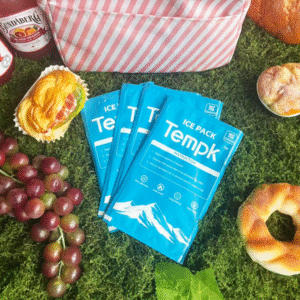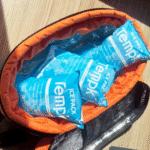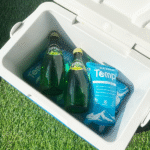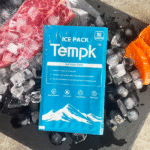Weltweiter Versand von Trockeneis und Kühlakkus: Der ultimative Leitfaden für 2025
Versand temperaturempfindlicher Güter wie Arzneimittel, Essen, und biologische Proben erfordern eine spezielle Verpackung und die Einhaltung globaler Vorschriften. Trockeneis und Kühlakkus gehören zu den zuverlässigsten Kühlmitteln für solche Transporte. Dieser Leitfaden enthält wichtige Informationen zum weltweiten Versand mit Trockeneis und Kühlakkus, einschließlich Best Practices, Vorteile, und das Neueste 2025 Trends.
-
Was ist Trockeneis, und wie funktioniert das beim Versand??
-
Was sind die Hauptunterschiede zwischen Trockeneis und Kühlakkus für weltweite Lieferungen??
-
Was sind die besten Praktiken für den weltweiten Versand von Trockeneis und Kühlakkus??
-
Wie kann die Verwendung von Trockeneis und Kühlakkus Ihrem Unternehmen zugute kommen??
-
Was sind die neuesten Trends beim Trockeneisversand? 2025?
Was ist Trockeneis und wie funktioniert es für den weltweiten Versand??
Trockeneis ist die feste Form von Kohlendioxid (CO2), was untermauert (dreht sich direkt von fest zu Gas um) bei -78,5 ° C. (-109.3° F). Im Gegensatz zu normalem Eis, Trockeneis schmilzt nicht in Wasser, Damit eignet es sich perfekt für den Versand temperaturempfindlicher Artikel ohne das Risiko von Wasserschäden. Es nimmt Wärme aus seiner Umgebung auf, Schaffung einer Umgebung mit niedrigen Temperaturen, die dazu beiträgt, die erforderliche Temperatur für verderbliche Waren während des Transports aufrechtzuerhalten.
Warum sollten Sie Trockeneis für den weltweiten Versand verwenden??
Trockeneis ist besonders wertvoll beim Versand von Produkten, die gefroren bleiben müssen. Für Unternehmen bietet es mehrere Vorteile:
-
Konsistente Temperaturregelung: Trockeneis hält im Vergleich zu normalem Eis über längere Zeiträume eine konstant niedrige Temperatur aufrecht, Verderbrisiken reduzieren.
-
Keine Wasserschäden: Seit Trockeneis untermauert, Es besteht keine Gefahr von Wasserschäden an der Ware, was insbesondere für Arzneimittel und Lebensmittel von entscheidender Bedeutung ist.
-
Globale Kompatibilität: Trockeneis wird weitgehend für den internationalen Versand akzeptiert, Sicherstellen, dass die Produkte bei Langstreckentransporten innerhalb der erforderlichen Temperaturbereiche bleiben.
Was sind Eisbeutel, und wann sollten Sie sie verwenden?
Eisbeutel sind mit Kühlmitteln auf Gel- oder Wasserbasis gefüllt, die bei bestimmten Temperaturen gefrieren, typischerweise um 0°C (32° F). Diese eignen sich für Gegenstände, die kühl, aber nicht gefroren bleiben müssen, wie zum Beispiel Pralinen, frische Produkte, und Arzneimittel, die nicht einfrieren sollten.
Warum sollten Sie sich für Kühlakkus entscheiden??
-
Weniger regulatorische Komplexität: Eisbeutel gelten nicht als Gefahrgut, Daher erfordern sie im Vergleich zu Trockeneis weniger Vorschriften.
-
Ideal für kürzere Dauer: Kühlakkus eignen sich für kürzere Sendungen und Produkte, die gekühlt statt eingefroren werden müssen.
Best Practices für den Versand von Trockeneis und Eisbeuteln
Verpackung und Belüftung
Die richtige Verpackung ist sowohl für Trockeneis als auch für Eisbeutel von entscheidender Bedeutung. Immer benutzen Isolierte Behälter Entwickelt, um niedrige Temperaturen aufrechtzuerhalten und eine ordnungsgemäße Belüftung zu ermöglichen. Für Trockeneis, Die Verpackung muss das Entweichen von CO2-Gas ermöglichen, um einen Druckaufbau zu vermeiden, während Eisbeutelbehälter verschlossen sein sollten, um ein Auslaufen zu verhindern.
Gewichtsgrenzen für Trockeneis verstehen
In verschiedenen Ländern gelten unterschiedliche Vorschriften für den Versand von Trockeneis. Typischerweise, bis zu 5.5 Pfund (2.5 kg) Trockeneis können in einem einzigen Paket versendet werden. Überprüfen Sie stets die örtlichen Vorschriften, um deren Einhaltung sicherzustellen.
Richtige Kennzeichnung
Sowohl Trockeneis- als auch Eisbeutelsendungen erfordern eine genaue Etikettierung. Trockeneissendungen müssen mit gekennzeichnet sein “Trockeneis” oder “Kohlendioxid, Solide” und das Passende Und 1845 Nummer. Geben Sie das Gewicht des Trockeneises und alle erforderlichen Gefahrensymbole an.
Sicherheits- und Handhabungsrichtlinien
-
Trockeneis: Fassen Sie Trockeneis immer mit isolierten Handschuhen an, um Erfrierungen zu vermeiden. Stellen Sie sicher, dass die Behälter belüftet sind, damit CO2-Gas sicher entweichen kann.
-
Eisbeutel: Eisbeutel sind einfacher zu handhaben, sollten jedoch in einer auslaufsicheren Verpackung aufbewahrt werden, um zu verhindern, dass Wasser auf die Ware gelangt.
Wie der Versand von Trockeneis und Kühlakkus Ihrem Unternehmen zugute kommt
Der Einsatz von Trockeneis und Eisbeuteln kann die Effizienz Ihrer Abläufe erheblich verbessern. So wie:
Verbesserte Produktqualität
Der Versand mit Trockeneis sorgt dafür, dass Produkte wie Tiefkühlkost geschützt werden, Biologische Proben, und Impfstoffe bleiben auf der erforderlichen Temperatur, Verhinderung des Verderbs und Erhaltung der Qualität.
Erweiterung des Serviceangebots
Durch die Integration von Trockeneis und Eisbeutelversand, Ihr Unternehmen kann in neue Märkte expandieren, die temperaturempfindliche Sendungen erfordern, wie der Pharma- oder Biotech-Industrie.
Verbesserte Kundenzufriedenheit
Geschwindigkeit und Effizienz sind auf dem heutigen Markt von entscheidender Bedeutung. Durch den zuverlässigen Versand von Trockeneis und Eisbeuteln, Sie können die Kundenanforderungen nach schneller Lieferung erfüllen, ohne die Produktqualität zu beeinträchtigen.
2025 Trends im Trockeneis- und Eisbeutelversand
Die Kaltkette -Logistikindustrie entwickelt sich schnell weiter, und hier sind einige wichtige Trends:
Intelligente Verpackung und Überwachung
Intelligente Verpackungstechnologien ermöglichen die Echtzeitüberwachung von Temperaturschwankungen, Luftfeuchtigkeit, und CO2-Werte während des Transports. Diese Innovationen helfen Unternehmen dabei, ihre Kühlkettenlogistik für mehr Effizienz zu optimieren.
Nachhaltige Versandlösungen
Da die Nachfrage nach umweltfreundlichen Praktiken wächst, Immer mehr Unternehmen setzen nachhaltige Verpackungsmaterialien für den Versand von Trockeneis und Eisbeuteln ein. Dazu gehören biologisch abbaubare Materialien und wiederverwendbare Kühlmittel.
Globale Versandpartnerschaften
In 2025, Unternehmen arbeiten zunehmend mit Logistikdienstleistern zusammen, die auf Kühlkettenlösungen spezialisiert sind, Dies ermöglicht sicherere und effizientere internationale Sendungen.
Häufig gestellte Fragen zum Versand von Trockeneis und Eisbeuteln
Q1: Kann ich Trockeneis zum Versenden verderblicher Waren verwenden??
Ja, Trockeneis eignet sich perfekt für den Versand verderblicher Waren, die gefroren bleiben müssen, wie Impfstoffe, Meeresfrüchte, und Tiefkühlkost.
Q2: Erfordern Kühlakkus eine besondere Dokumentation für den internationalen Versand??
NEIN, Eisbeutel gelten nicht als Gefahrgut, Sie erfordern daher nicht die komplexe Dokumentation, die bei Trockeneis erforderlich ist.
Q3: Wie stelle ich sicher, dass meine Trockeneissendungen im erforderlichen Temperaturbereich bleiben??
Stellen Sie eine ordnungsgemäße Verpackung sicher, Informieren Sie sich über die Gewichtsbeschränkungen vor Ort, und sorgen Sie bei Trockeneistransporten immer für eine ausreichende Belüftung.
Zusammenfassung und Empfehlungen
Trockeneis und Kühlakkus weltweit erfolgreich versenden, Es ist wichtig, die Best Practices für die Verpackung zu befolgen, Beschriftung, und regulatorische Einhaltung. Diese Methoden gewährleisten nicht nur einen sicheren und effizienten Versand, sondern helfen Ihrem Unternehmen auch, sein Serviceangebot zu erweitern und die Kundenzufriedenheit zu steigern.
Über Tempk
Und Tempk, Wir sind auf temperaturgeführte Logistiklösungen spezialisiert, Gewährleistung eines sicheren und konformen Versands temperaturempfindlicher Güter. Unser Fachwissen im Bereich Trockeneis und Eisbeutelsysteme hilft Unternehmen dabei, die Komplexität der globalen Kühlkettenlogistik zu bewältigen.
Bereit, Ihre Kühlkettenabläufe zu optimieren? Kontaktieren Sie Tempk noch heute für fachkundige Beratung und individuelle Empfehlungen zum Versand von Trockeneis und Eisbeuteln.
























